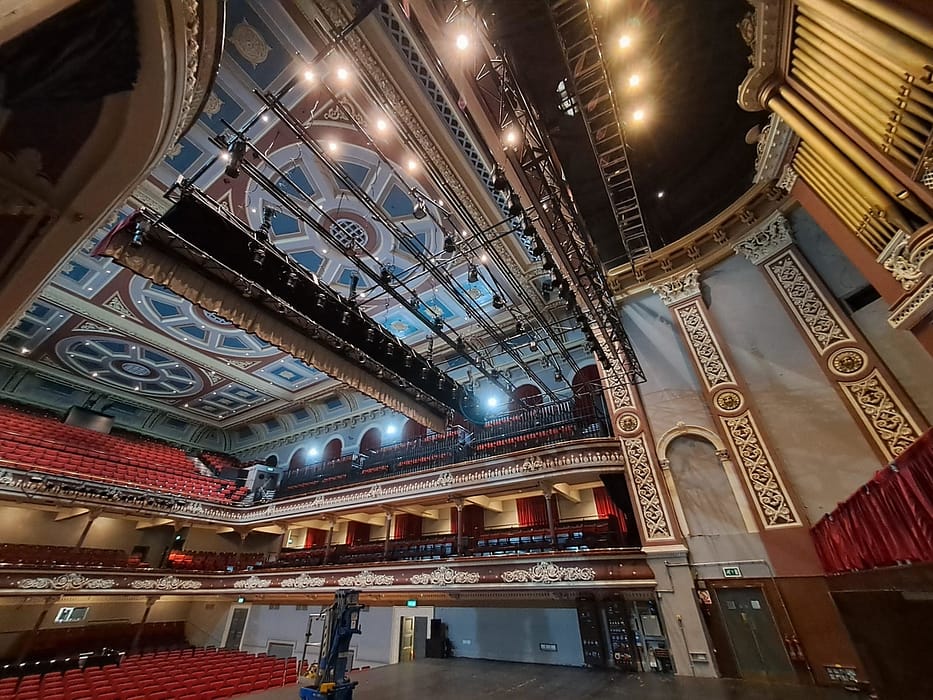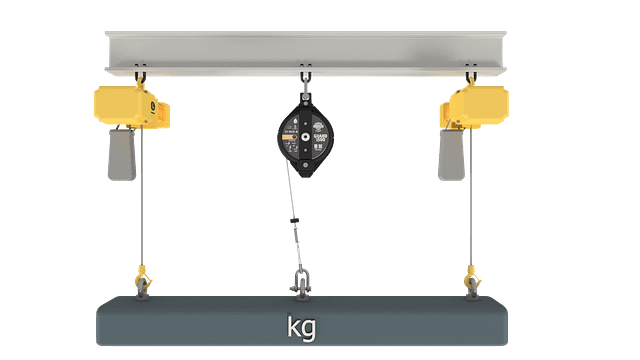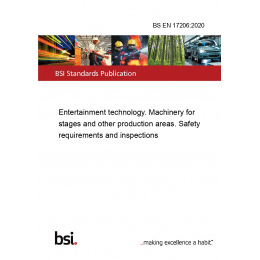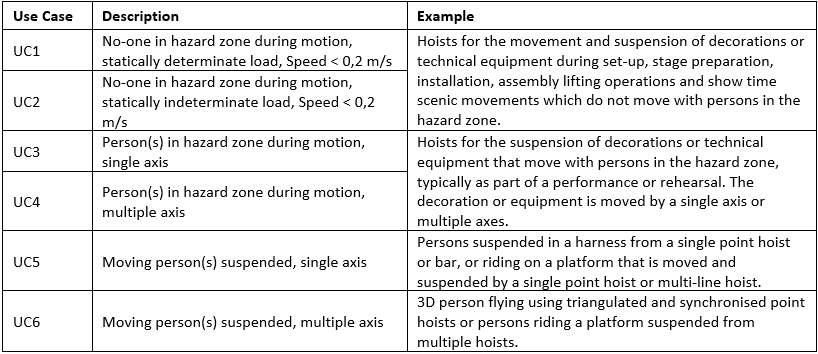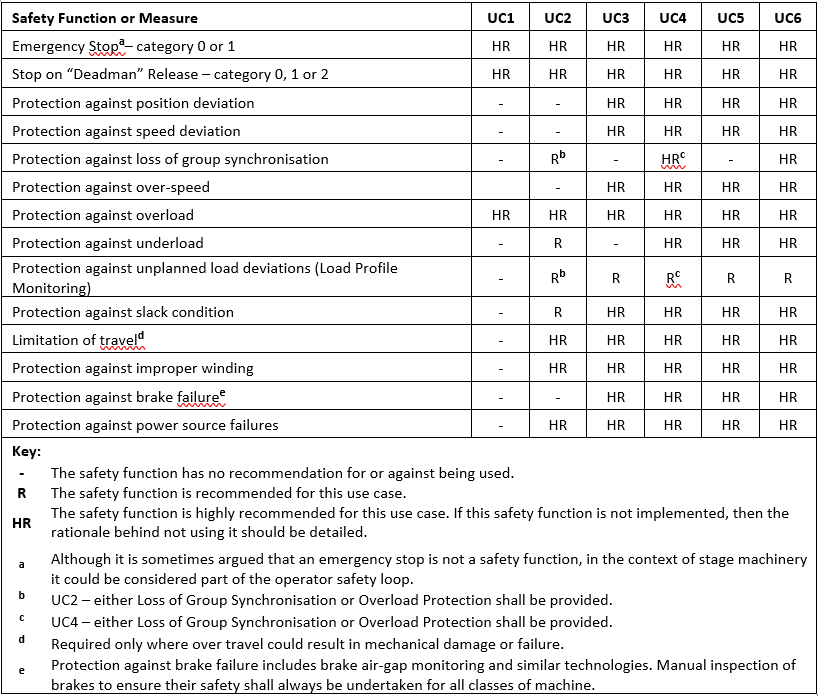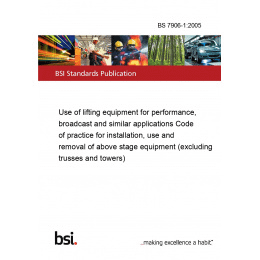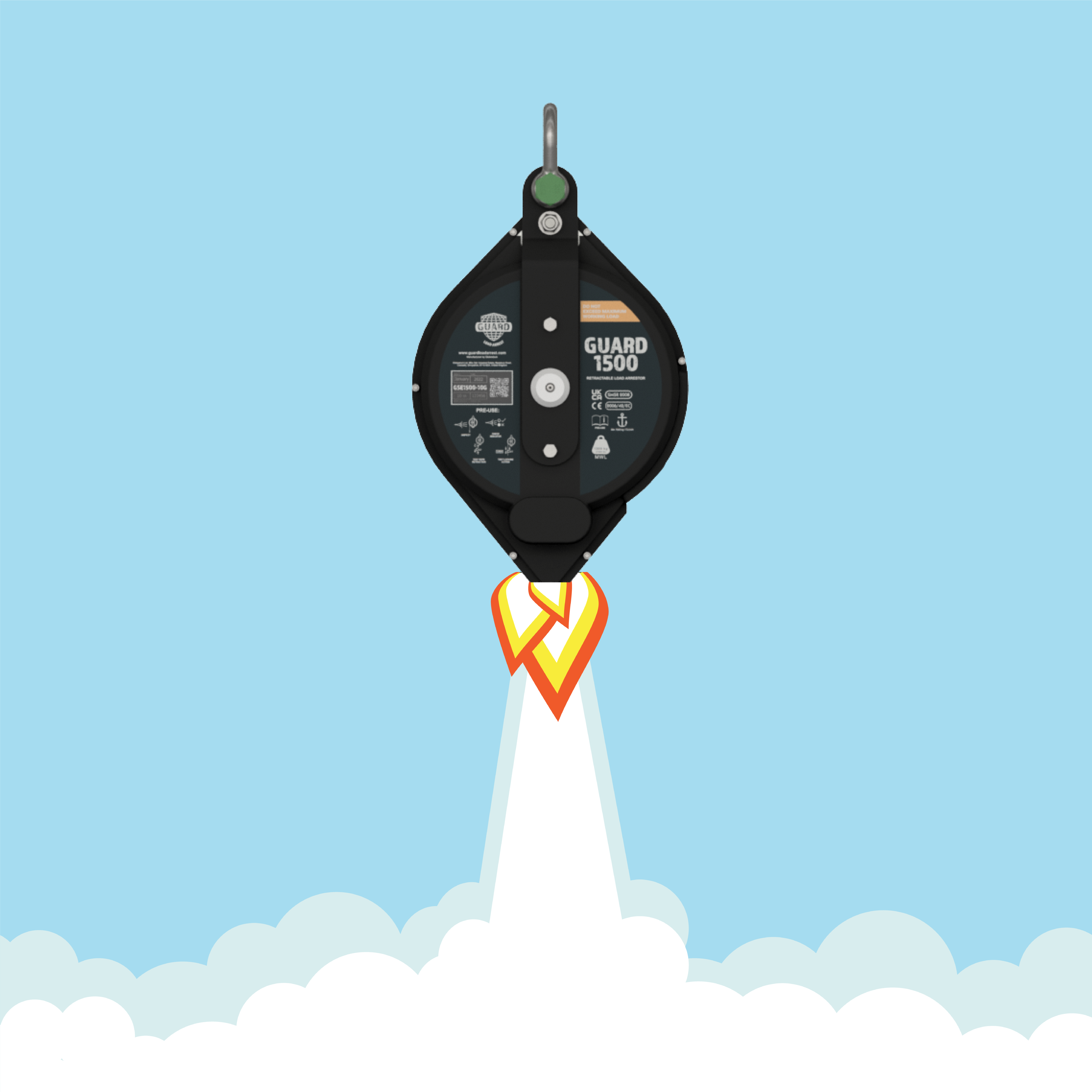Case Study: St George’s Hall
Client: St George’s Hall, Bradford Theatres
Problem:
The concert hall’s engineering team reached the conclusion that, to provide a safe system of work, adding-in Guard Load Arrest protection to the system would be the correct solution. However, with St George’s Hall being an old concert hall, the pipe we had to pass the load arrestor’s cable through was extremely narrow and, when researching the project, no obvious answer became apparent to allow the cable, ferrule, thimble & shackle to pass through the pipe from the anchorage point to the truss below within the theatre.
Solution:
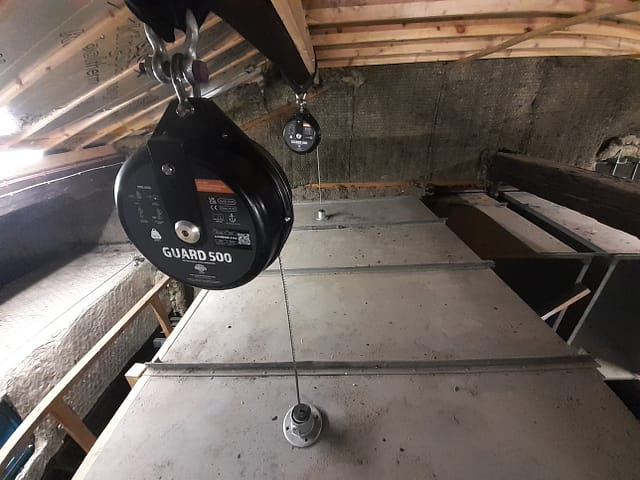
The new configuration of the bottom shackles on Guard Load Arrestors means that the shackle can be easily removed from the cable (the pin fits through the thimble), thereby solving part of the problem.
Due to the pipe being so narrow, the standard thimble still wouldn’t pass through the pipe. However, with Guard Load Arrest being the product manufacturer (with a full understanding of the product’s technical file), we were able to change the thimble to a narrow gauge alternative. This allowed the thimble to fit through the narrow pipe and then the shackle be reattached through the thimble.
This solution was achieved by Guard Load Arrest being able to manufacture the solution in accordance with the technical file and provide a solution that worked precisely for the customer.
Guard Load Arrest diventano sostenitori ufficiali dell'ABTT
Guard Load Arrest è orgogliosa di annunciare di essere Industry Supporters per l'Association of British Theatre Technicians (ABTT), un'organizzazione associativa con backstage ed edifici teatrali al centro.
Guard Load Arrest è appena stato lanciato, offrendo soluzioni di arresto del carico durature ai settori dell'intrattenimento e industriale. La gamma di prodotti offre protezione da 150 kg a 1500 kg e sono già in corso sviluppi per ampliare ulteriormente la gamma. Guard Load Arrest è desideroso di supportare le organizzazioni all'interno del settore, quindi desideravamo iscrivermi a questa opportunità con ABTT.
L'ABTT è un'organizzazione associativa che stabilisce e sostiene gli standard di eccellenza tecnica, sicurezza e conformità per il teatro e le esibizioni dal vivo. L'organizzazione è un'eccellente risorsa per sostenere i membri, attraverso la fornitura di informazioni e consigli su buone pratiche, lavoro sicuro e applicazione nell'industria teatrale. Forniscono consulenza su sicurezza, pianificazione e buone pratiche.
Tra le altre cose, questa partnership aiuterà Guard Load Arrest a sottolineare l'importanza di elevati standard di sicurezza nell'industria teatrale, in particolare per quanto riguarda le apparecchiature sospese in altezza.
Per saperne di più su Guard Load Arrest, visitare www.guardloadarrest.com o contatto il team esperto.
Guard Load Arrest Lanci
Guard Load Arrest è appena stato lanciato, offrendo soluzioni di arresto del carico durevoli al intrattenimento e industriale settori.
La gamma di prodotti offre protezione da 150 kg a 1500 kg e sono già in corso sviluppi per espandere ulteriormente la gamma.
Uno degli usi più comuni dei limitatori di carico è come a protezione secondaria per paranchi a catena. Patrick Evans, amministratore delegato, spiega di più:
“EN 17206 prevede che durante l'installazione di paranchi elettrici a catena siano necessarie due soluzioni di sicurezza indipendenti. Il fatto che il freno secondario di un paranco fornisca il livello di sicurezza necessario dipende dalla tua valutazione del rischio, ma stiamo scoprendo sempre di più che gli installatori stanno implementando unità Guard insieme ai paranchi per fornire una protezione separata, in caso di guasto del sistema primario".
Naturalmente, i paranchi elettrici a catena sono generalmente dotati di un freno di sicurezza che si attiva se il freno principale si guasta. Ma qual è il backup se la catena o l'ancora del paranco si guastano? Patrick continua dicendo:
“Sono disponibili alcune opzioni, una delle quali consiste nel collegare semplicemente un cavo d'acciaio fisso come soluzione di sicurezza secondaria. Questo sarebbe estremamente sicuro. Tuttavia, sempre più utenti stanno abbandonando questo metodo a causa dell'elevato costo di invio di un rigger per staccare e riparare ogni volta che è necessario. I limitatori di carico di protezione sono un'alternativa economicamente vantaggiosa che supera questo problema fornendo un cavo d'acciaio che si estende e si ritrae automaticamente, seguendo il movimento del carico, senza doverlo staccare."
Se l'attrezzatura portante principale si guasta, il limitatore di carico Guard arresterà automaticamente la caduta del carico, prevenendo così danni all'attrezzatura e, cosa più importante, proteggendo il pubblico/esecutori sottostanti.
Non è solo il settore dell'intrattenimento dove le Guardie vengono installate sempre più spesso. Molti applicazioni industriali beneficiare dell'arresto del carico. Patrick spiega:
“Ci sono un numero enorme di applicazioni in cui i limitatori di carico forniscono una soluzione di sicurezza ideale. Sollevi o sospendi attrezzature o materiali che non possono essere lasciati cadere? In tal caso, dovresti considerare l'installazione di un dispositivo di arresto del carico Guard come protezione in caso di guasto dell'attrezzatura di sollevamento principale."
“Le linee di produzione non possono permettersi lunghi periodi di fermo per riparare le apparecchiature cadute. Un ottimo esempio è come alcune case automobilistiche dipendano dai limitatori di carico Guard per proteggere i punti chiave della linea di produzione; i loro ingegneri hanno identificato un rischio di spegnimento di attrezzature pesanti durante l'uso, che potrebbe causare una caduta incontrollata sul pavimento dell'officina. È qui che interviene Guard Load Arrest. Un dispositivo di arresto del carico Guard posizionato nel punto giusto catturerà automaticamente l'attrezzatura in caduta, fermandola a colpire il pavimento. I nostri prodotti sono così versatili e affidabili che vengono persino utilizzati come protezione per il sollevamento di materiali radioattivi in un determinato impianto nucleare del Regno Unito!"
L'elenco dei clienti di Guard Load Arrest è già impressionante, inclusi O2 Academy Group e Jaguar Land Rover.
Il nuovo Guard gamma è ora disponibile.
Abbiamo il decollo!
Ciao mondo.
Incontrare Guard Load Arrest.
Guarda questo spazio per notizie e articoli sulla gamma di scaricatori di carichi di guardia.

